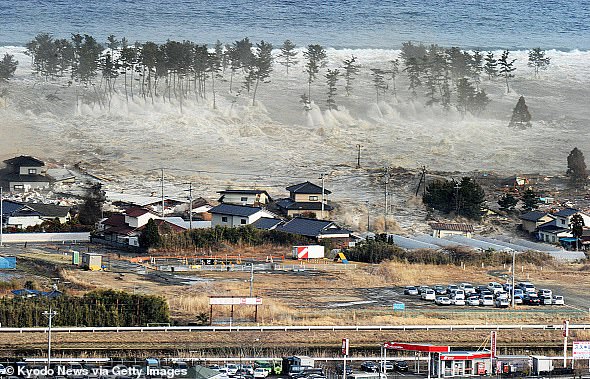
Japan’s Megaquake Alert: Experts Warn 300,000 Casualties, 100-Foot Tsunami Threat
Japan Issues Urgent Megaquake Warning: 300,000 Lives at Risk
[Image: A map highlighting the Nankai Trough and expected tsunami wave heights, with regions in black indicating waves over 20m.]
Caption: The Nankai Trough (red line) could trigger tsunamis exceeding 34m, engulfing coastal cities like Kuroshio and Tosashimizu.
The Japanese government has issued an urgent alert over a potential megaquake in the Nankai Trough, a seismic hotspot off the Pacific coast. Experts warn there’s an 80% chance of a magnitude 9 tremor occurring within 30 years, with catastrophic consequences. New estimates predict up to 300,000 deaths, primarily from tsunamis surpassing 30m (98ft), alongside widespread destruction of infrastructure and £1.44 trillion in damages.
Why the Nankai Trough?
Located where the Philippine Sea Plate subducts beneath the Eurasian Plate, this 600-mile trench generates megaquakes every 100–200 years. Japan’s position on the Pacific Ring of Fire—a zone accounting for 81% of global large quakes—makes it highly vulnerable. The trough’s last major rupture in 1944 caused a magnitude 8.1 quake, but scientists warn the next event could be far deadlier.
[Image: Aerial view of collapsed buildings from the 2011 Tohoku earthquake.]
Caption: The 2011 Tohoku quake (magnitude 9.0) killed 15,500 people. A Nankai megaquake could be 20 times deadlier.
Worst-Case Scenario
In the deadliest forecast, 215,000 would drown in tsunamis, while 73,000 perish in building collapses and 8,700 in fires. Over 12.3 million people—10% of Japan’s population—would evacuate as 2.35 million buildings are destroyed. Coastal cities like Tokyo face 10m waves, while Kochi Prefecture could see 34m walls of water. Winter nighttime strikes would heighten casualties, leaving survivors vulnerable to exposure and disease, potentially causing 26,000–52,000 post-disaster deaths.
Lessons from 2011
The 2011 Tohoku quake unleashed 40m tsunamis and triggered the Fukushima nuclear disaster. Despite stricter building codes and tsunami barriers, the Nankai threat outpaces current defenses. Updated simulations show evacuation times as short as two minutes in some areas, with 444 square miles of land inundated.
[Image: Satellite imagery showing Fukushima’s aftermath post-tsunami.]
Caption: The 2011 tsunami caused a nuclear meltdown in Fukushima. A Nankai quake could cripple infrastructure across central Japan.
Economic and Human Toll
Damage estimates exceed £1.44 trillion, dwarfing the 2011 disaster’s £170 billion cost. Regions facing the highest seismic intensity (level 7) include Shizuoka and Wakayama, where infrastructure would collapse. Millions would lose homes, jobs, and access to essentials, straining recovery efforts for years.
Preparing for the Inevitable
Authorities urge expedited evacuation plans and reinforced infrastructure. Yet, with megaquakes inevitable, Japan’s focus remains on saving lives through early warning systems and public drills. As one official stated, “The question isn’t if, but when—and how ready we’ll be.”
[Image: Residents participating in an earthquake drill in Tokyo.]
Caption: Japan conducts regular disaster drills, but the scale of a Nankai megaquake poses unprecedented challenges.
Conclusion
With 30 years as the critical window, Japan faces a race against time to mitigate a disaster poised to reshape its future. The Nankai Trough’s grim prophecy underscores the fragile balance between human resilience and nature’s fury.
Word count: ~600


